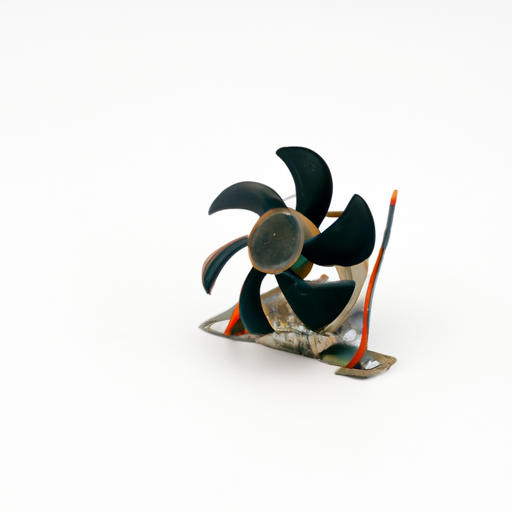An article will help you understand what a fan capacitor is
Understanding Fan Capacitors: A Comprehensive Guide
I. Introduction
In the world of electrical systems, fan capacitors play a crucial role in ensuring that various types of fans operate efficiently and effectively. But what exactly is a fan capacitor, and why is it so important? This article aims to demystify fan capacitors, exploring their functions, types, and applications, as well as how to identify and replace faulty capacitors. By the end of this guide, you will have a comprehensive understanding of fan capacitors and their significance in electrical systems.
II. What is a Fan Capacitor?
A. Basic Definition and Function
A fan capacitor is an electrical component that stores and releases electrical energy in a circuit. It is designed to improve the performance of electric motors, particularly in fans. By providing an initial boost of energy, fan capacitors help start the motor and maintain its operation, ensuring smooth and efficient performance.
B. Types of Fan Capacitors
There are two primary types of fan capacitors:
1. **Start Capacitors**: These capacitors provide a short burst of energy to help start the motor. They are typically used in single-phase motors and are disconnected from the circuit once the motor reaches a certain speed.
2. **Run Capacitors**: Unlike start capacitors, run capacitors remain in the circuit while the motor is running. They help improve the motor's efficiency and performance by providing a continuous supply of energy.
C. Common Applications in Various Types of Fans
Fan capacitors are used in a variety of applications, including:
1. **Ceiling Fans**: In ceiling fans, capacitors help regulate speed and improve energy efficiency, allowing for smooth operation at different settings.
2. **Exhaust Fans**: Exhaust fans utilize capacitors to ensure they start quickly and run efficiently, helping to ventilate spaces effectively.
3. **HVAC Systems**: In heating, ventilation, and air conditioning (HVAC) systems, capacitors are essential for the operation of blower motors and compressors, contributing to overall system efficiency.
III. How Fan Capacitors Work
A. The Role of Capacitors in Electrical Circuits
Capacitors are passive electrical components that store energy in an electric field. When connected to a power source, they charge up and can release that stored energy when needed. In fan motors, capacitors help create a phase shift in the electrical current, which is essential for starting and running the motor.
B. Explanation of Capacitance and Its Measurement
Capacitance is the ability of a capacitor to store electrical energy, measured in farads (F). Most fan capacitors are rated in microfarads (µF), which is one-millionth of a farad. The capacitance value indicates how much energy the capacitor can store and release, directly affecting the performance of the fan motor.
C. The Process of Starting and Running a Fan Motor
1. **Starting Phase**: When power is applied to the fan motor, the start capacitor provides an initial surge of energy, allowing the motor to overcome inertia and begin spinning.
2. **Running Phase**: Once the motor reaches a certain speed, the start capacitor is disconnected, and the run capacitor takes over, providing a continuous supply of energy to maintain the motor's operation.
D. The Relationship Between Capacitors and Motor Efficiency
Capacitors play a vital role in enhancing motor efficiency. By ensuring that the motor receives the right amount of energy at the right time, capacitors help reduce energy waste and improve overall performance. A well-functioning capacitor can lead to lower energy bills and a longer lifespan for the fan motor.
IV. Identifying a Faulty Fan Capacitor
A. Signs of a Failing Capacitor
Recognizing the signs of a failing fan capacitor is crucial for maintaining optimal performance. Common indicators include:
1. **Unusual Noises**: If you hear humming, buzzing, or clicking sounds coming from the fan, it may indicate a problem with the capacitor.
2. **Inconsistent Fan Speed**: A fan that struggles to maintain a consistent speed or frequently changes speed may have a faulty capacitor.
3. **Overheating**: If the fan motor or capacitor feels excessively hot to the touch, it could be a sign of failure.
B. Testing a Fan Capacitor
To determine if a capacitor is faulty, you can perform a simple test using a multimeter. Here’s how:
1. **Tools Required**: You will need a multimeter capable of measuring capacitance.
2. **Step-by-Step Testing Process**:
- Disconnect the power supply to the fan.
- Remove the capacitor from the fan.
- Set the multimeter to the capacitance measurement mode.
- Connect the multimeter leads to the capacitor terminals.
- Compare the reading to the capacitor's rated capacitance. If the reading is significantly lower or shows no reading, the capacitor is likely faulty.
C. When to Replace a Fan Capacitor
If you identify a faulty capacitor, it’s essential to replace it promptly. Continuing to use a fan with a failing capacitor can lead to further damage to the motor and other components, resulting in costly repairs.
V. Replacing a Fan Capacitor
A. Safety Precautions
Before attempting to replace a fan capacitor, ensure you take the necessary safety precautions:
- Disconnect the power supply to the fan.
- Use insulated tools to prevent electrical shock.
- Allow the capacitor to discharge fully before handling it.
B. Tools and Materials Needed
You will need the following tools and materials for the replacement:
- Screwdriver
- Multimeter
- New capacitor (ensure it matches the specifications of the old one)
- Electrical tape
C. Step-by-Step Guide to Replacing a Fan Capacitor
1. **Disconnecting Power**: Turn off the power supply to the fan at the circuit breaker.
2. **Removing the Old Capacitor**: Open the fan housing and locate the capacitor. Carefully disconnect the wires and remove the old capacitor.
3. **Installing the New Capacitor**: Connect the new capacitor, ensuring that the wiring matches the original configuration. Secure it in place.
4. **Testing the Fan After Replacement**: Reassemble the fan housing, restore power, and test the fan to ensure it operates correctly.
VI. Maintenance Tips for Fan Capacitors
A. Regular Inspection and Cleaning
To prolong the life of your fan capacitor, perform regular inspections. Look for signs of wear, corrosion, or damage. Additionally, keep the fan and its components clean to prevent dust buildup, which can affect performance.
B. Signs That Indicate Maintenance is Needed
Be vigilant for any unusual noises, inconsistent speeds, or overheating, as these can indicate that maintenance is required. Addressing these issues early can prevent more significant problems down the line.
C. Best Practices for Prolonging Capacitor Life
- Ensure proper ventilation around the fan to prevent overheating.
- Avoid overloading the fan with excessive use.
- Use the fan within its rated specifications to prevent undue stress on the capacitor.
VII. Conclusion
Fan capacitors are essential components that significantly impact the performance and efficiency of various types of fans. Understanding their function, how to identify faults, and the process of replacement can empower you to maintain your fans effectively. By taking the time to learn about fan capacitors, you can ensure that your electrical systems operate smoothly and efficiently, ultimately saving you time and money.
VIII. Additional Resources
For further reading and resources on fan capacitors, consider the following:
Recommended Readings: Look for books and articles on electrical systems and motor maintenance.
Professional Services: If you encounter persistent issues with your fan capacitor, consider consulting a licensed electrician or HVAC technician.
FAQs About Fan Capacitors: Many online forums and websites provide answers to common questions about fan capacitors and their maintenance.
By understanding fan capacitors, you can take proactive steps to ensure the longevity and efficiency of your fans, contributing to a more comfortable and energy-efficient environment.



